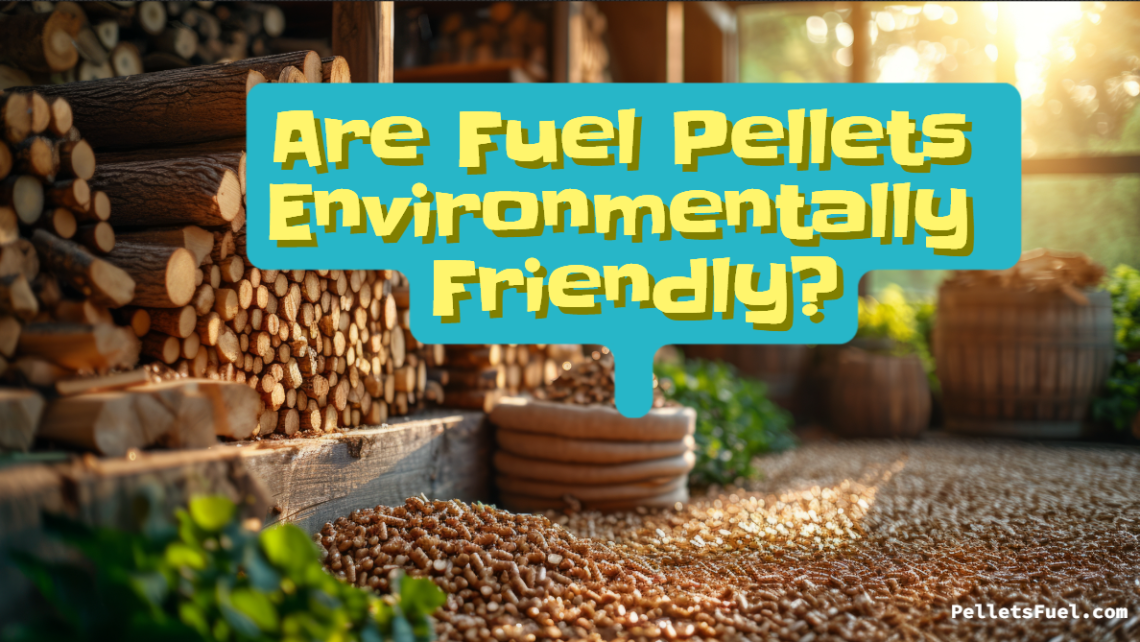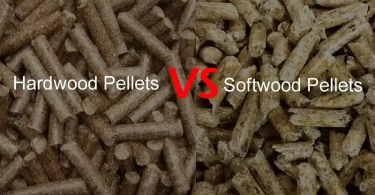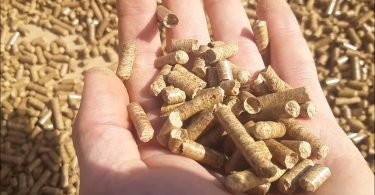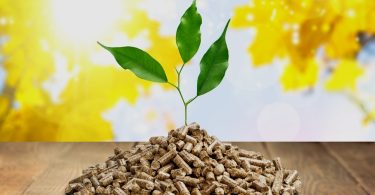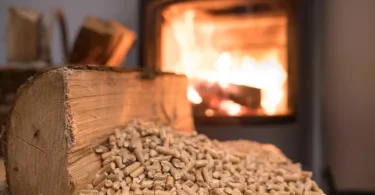- What Are Wood Fuel Pellets?
- How Are Wood Pellets Made?
- What Materials Are Used to Make Wood Pellets?
- Are Wood Pellets Environmentally Friendly?
- * Renewable Energy Source
- * Low Emissions
- * High Combustion Efficiency
- *Wood Pellets Reduce Waste
- Sustainably Sourced Materials
- Unsustainably Sourced Materials
- Final Thoughts
Fuel pellets are often portrayed as a sustainable and environmentally friendly solution for home heating and energy storage and production. Still, we need to consider this fuel from a critical standpoint to be able to understand exactly how sustainable it is. With a lot of green washing in the market and with a real necessity to reduce our carbon dioxide emissions, we need to be on the lookout for the most sustainable heating solution there is.
The Answer is: YES! Pellet fuels are a very environmentally friendly way to keep your house warm or to produce energy on an industrial scale. with a variety of uses, ranging from residential and commercial to industrial applications. Wood fuel pellets are an excellent way of storing and releasing energy in the form of combustion. On top of this, if sustainably sourced, they have a significant potential to reduce the amount of waste being sent to the landfills and the amount of carbon dioxide being naturally released from our forests.
What Are Wood Fuel Pellets?
Wood fuel pellets are a heating product that is made from virgin wood, waste from the wood processing industry or even from agricultural waste. As such, these products have a lot of potential to significantly decrease our carbon dioxide emissions and to make heating a more sustainable operation. Wood fuel pellets, therefore, have a potential to stay as one of the future fuels, in the past-fossil fuel era.
Read Also : Types of fuel pellets
How Are Wood Pellets Made?
Wood pellets are made by first milling or hammer milling appropriate biomass. Once the biomass has the consistency of sawdust it is sent through an extruder. In the extruder, powerful rollers push down on the biomass which is extruded through haloes or dies of different sizes, usually ranging from 6-8 mm in diameter, with the industry recognizing pellets of diameters ranging as far as 5-10 mm.
Read Full Post Here : How Are Fuel Pellets Made?
Once this process is done, the resulting pellets are sent through sieving and are cooled down and packed. Wood pellets can be purchased in prepacked plastic bags ranging from 15-18 kilos or on pallets weighing anywhere between 1 and 1.2 metric tons.
What Materials Are Used to Make Wood Pellets?
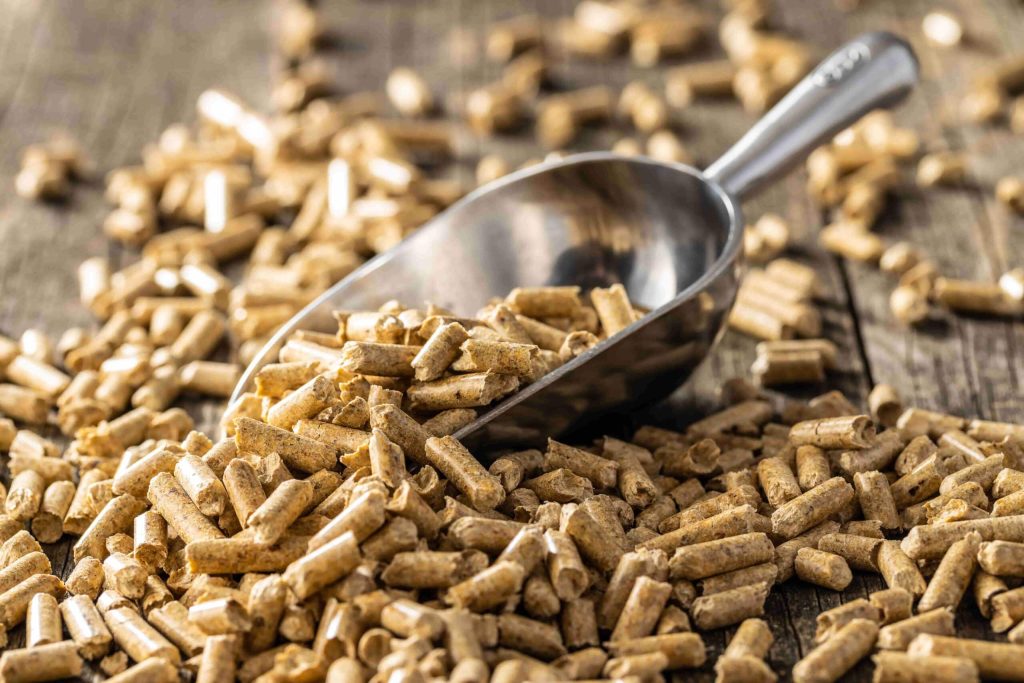
Several materials can be used to make wood pellets. They include virgin wood which can be both sustainably or unsustainably sourced, waste from the wood processing industry, waste from paper processing industry or recycling operations, and even agricultural waste. Depending on where and how the feedstock is sourced, pellets can range in both their quality, energy stored, and the level of their sustainability.
If we take a closer look at the production process, we can see that a lot of it is carried out using electricity. Introducing solar panels or other forms of renewable energy to power the process of pelletization or extrusion can further reduce the carbon footprint of wood pellets as a fuel source. On top of this, if the feedstock material comes in the form of waste from another industry, would pellets have a significant potential to reduce the amount of waste being sent to our landfills.
All organic material that is sent to a landfill will eventually start to release methane, and very potent greenhouse gas. Instead of letting the carbon from this biomass be released into the atmosphere in the form of methane, pelletizing this biomass and using it for heating results in CO2 being released. Although CO2 is also a greenhouse gas it has a much lower potential to capture heat in our atmosphere. On top of this, the entire process of using pellets to heat our homes simply releases the energy that has already been stored in them that would have otherwise gone to waste.
Are Wood Pellets Environmentally Friendly?
Yes, wood pellets are environmentally friendly. There are several reasons for this including the nature of their feedstock, lower emissions compared to burning wood for heating, increased combustion efficiency and even reduced waste materials. Let’s go and consider each of these factors in more detail.
* Renewable Energy Source
Wood is considered to be a renewable energy source by many. If the wood used in the pellet production is sustainably sourced, such as coming from responsibly managed forests, or from different wood wastes, pellets can be seen as a renewable energy source. Of course, the cost of production and transportation and associated CO2 emissions have to be taken into consideration. Still, considering their more compact size and higher energy density in comparison to wood chips or wood waste, pellets can still be considered a more environmentally friendly solution.
* Low Emissions
The combustion process of fuel pellets or wood pellets is carried out in special combustion chambers in pellet stoves. These stoves are equipped with a lot of mechanical parts and sensors, which can monitor the rate of combustion and the heat that is released. All these sensors help lower the emissions, by improving the combustion efficiency and reducing the amount of carbon monoxide and PM particles that get released into the atmosphere.
Not only are wood pellets associated with lower emissions, but the highly efficient combustion process ensures that very harmful greenhouse gasses such as methane and carbon monoxide are not released during the combustion phase. Instead, pure CO2 and some water vapor get released into the atmosphere. Although they are greenhouse gasses too, their potential for storing access heat energy is much lower than that of methane. Carbon monoxide is also associated with the greenhouse effect but also has detrimental consequences on human health as It gets accumulated in the human body. None of it gets released during the combustion process of wood pellets.
* High Combustion Efficiency
The lower release of harmful gasses happens thanks to the high combustion efficiency. This efficiency comes from the fact that fresh, oxygen-rich air is introduced during the combustion process several times. This results in more CO2 being released and less ash being formed. The high combustion efficiency can also be achieved thanks to the fact that most pellets have a very low moisture content of anywhere between 5-10%. This results in more heat being released into the space that is heated and less of it being used to vaporize the water and push it through the chimney.
| Fuel Type | Energy Density (kWh/kg) |
| Pine | 5.11 |
| Hardwood | 5.23 |
| Softwood | 4.09 |
| Crop Residue | 5.00 |
*Wood Pellets Reduce Waste
Depending on their quality, wood pellets can significantly reduce waste, especially the waste coming in the form of ash. In fact, premium quality wood pellets produce less than 1% ash. Standard quality pellets produce around 2% of ash. It should be noted that this ash shouldn’t be considered waste, at least not in rural areas, as it can be used as a strong fertilizer throughout the garden and on farms.
Sustainably Sourced Materials
When talking about the feedstock and the raw materials that enter the production stage of the wood pellet extrusion, the best quality pellets will always be made from sustainably sourced materials. If they’re made out of timber, the timber should come out of responsibly managed forests. This can include aged timber and timber that has dried on its own. In addition to this, it should also be noted that sustainably sourced materials can also represent clean materials coming out of the different production plants they deal with managing and processing wood.
Unsustainably Sourced Materials
Unsustainably sourced materials that can be used as feedstock also include timber, but timber that comes from forests that are not managed properly. This timber can come from land that has been cleared or from different waste products that are polluted by paint or different wood furnishings and from treated wood. Very low quality pellets will usually contain traces of biomass, plastic particles, etc.
Final Thoughts
Pellet fuels are a very environmentally friendly way to keep your house warm or to produce energy on an industrial scale. with a variety of uses, ranging from residential and commercial to industrial applications. Wood fuel pellets are an excellent way of storing and releasing energy in the form of combustion. On top of this, if sustainably sourced, they have a significant potential to reduce the amount of waste being sent to the landfills and the amount of carbon dioxide being naturally released from our forests.

